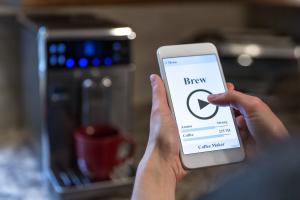
Applying Point-of-Consumption Data to Optimize In-Product CX

Is your brand trying to drive engagement of its products? How much data are you gathering about the time or money consumers spend while using your products?
Product managers are more frequently coming to me looking for ways to power their in-product customer experience (CX) with predictive analytics to fuel engagement, earn consumer mind share and keep users coming back for more. Marketing stakeholders, in less mature organizations, are also more commonly tasked with these same types of engagement goals. Over the last few months, I've heard a variety of finserv, restaurant, and education application use cases. Some are digital-only mobile apps, and some are digitally enhanced Wi-Fi-connected real life appliances.
In every case, however, designing a consistent and addictive CX means understanding how your customers use your product in their daily lives long after they make a purchase. Today, the customer experience represents a multitude of touchpoints and interactions across many different channels and modalities from web activity to the conversion point to the ongoing relationship and interaction with a brand. With the digital journey growing so complex product managers and marketers are inundated with millions of customer data points. The challenge for brands is understanding and activating valuable insights to fuel product adoption, boost customer retention, and earn advocacy.
Before we can consistently automate the addictive CX that begs for more product engagement, we must understand one critical foundational dependency: user-level point-of-consumption data.
What Are Point-of-Consumption (PoC) Data?
Point-of-consumption data is user-specific transaction level data collected when a consumer uses a product or service and must not be confused with point-of-sale (POS) data, which is collected when a consumer buys a product or service.
Here are some popular PoC data examples:
- Facebook tracking user behavior on its Instagram app
- Progressive monitoring driving behavior for usage-based auto insurance
- Keurig personalizing your cup of coffee
At first, it may seem daunting to document every way one of your consumers might interact with one of your products! But take a moment to consider the Instagram PoC data landscape:
- Posts: searching, publishing, viewing, updating, commenting, reacting, deleting,
- Stories: searching, publishing, viewing, updating, commenting, reacting, deleting,
- Messages: searching, sending, receiving, reacting, unsending.
By organizing these Instagram PoC events, a pattern is clear. Think about the landscape of PoC activity as combinations between your brand product’s modules/objects/buttons and SCRUD operations: (s)earch, (c)reate, (r)ead/view, (u)pdate, (d)elete.
What is the SCRUD landscape of your brand’s product? Do you track and collect these transactional PoC data in near real-time down to the device or user?
If not, why not? Is there a technical challenge with your product’s event tagging, product interface, throughput or transmission? If your product cannot be digitized (i.e, a consumable) you may not think that point-of-consumption data is relevant to your goals. However, there are many other channels and touchpoints where PoC data can tell you much more about your holistic customer experience and the way customers are engaging with your brand. Here are some areas to consider where point-of-consumption data can help supplement your customer understanding:
- Which partner product data can supplement your own data sources?
- Do you have a mobile app, subscription, or loyalty program?
-
How mature are your off-domain digital management operations (ie, social, digital voice assistants, etc)?
Still, even after you’ve gathered all of this product engagement data, you need to determine a way to analyze and produce actionable insights from the information that will lead to a meaningful CX strategy. However, with huge amounts of customer actions and data points, manual business intelligence efforts can be hugely time consuming or require external resources in the form of data specialists.
What if instead of parsing through mounds of big data scattered across all your systems, this feedback process could be tightened, intelligent, scalable and automated?
Activating Point-of-Consumption Data for Addictive Product CX
Enter machine learning, the simplest way to recognize patterns and effectively predict customer behavior at scale. Through robust machine learning capabilities for marketers and a unified source of customer intelligence, Acquia Marketing Cloud allows brands to collect all sorts of data for predictive analytics to ingest, process and make intelligently actionable. Generally, here are the most common types:
- Contact
- Transaction [including PoC]
- Product
- Channel
- CX Touch
When these types of point-of-consumption data are analyzed via Acquia Marketing Cloud’s customer data platform, they unlock enormous CX brand value. The CDP consolidates, analyzes, and makes all these data points actionable so they can be activated to inform CX efforts.
So what if your brand is trying to increase product adoption measured in the amount of time or money that users spend while using a product? Or your product team is unsure which highly contextual, targeted application notifications and smart features will delight consumers? Both of these answers are changing over time based on audience insights, releases and the evolution of your brand. You need to be continuously paying attention to how your customers continue to interact with your product, and you need to activate these insights fast in order to create meaningful and relevant experiences.
You could struggle with months of time-consuming manual data hygiene and UX efforts, or you could use Acquia Marketing Cloud as your product’s engagement brain to automatically combine contact, device, and PoC data to run behavior-based clustering. Then you can automatically activate the intelligence at scale within the product itself, relevant off-domain channels and auxiliary products (ie, if your brand sells cookie dough, try mobile app, digital voice assistant or ovens).
Activating PoC data within this omnichannel IoT framework not only keeps consumers highly engaged and satisfied with your product experiences, but it also fuels proactive care and acquisition.
